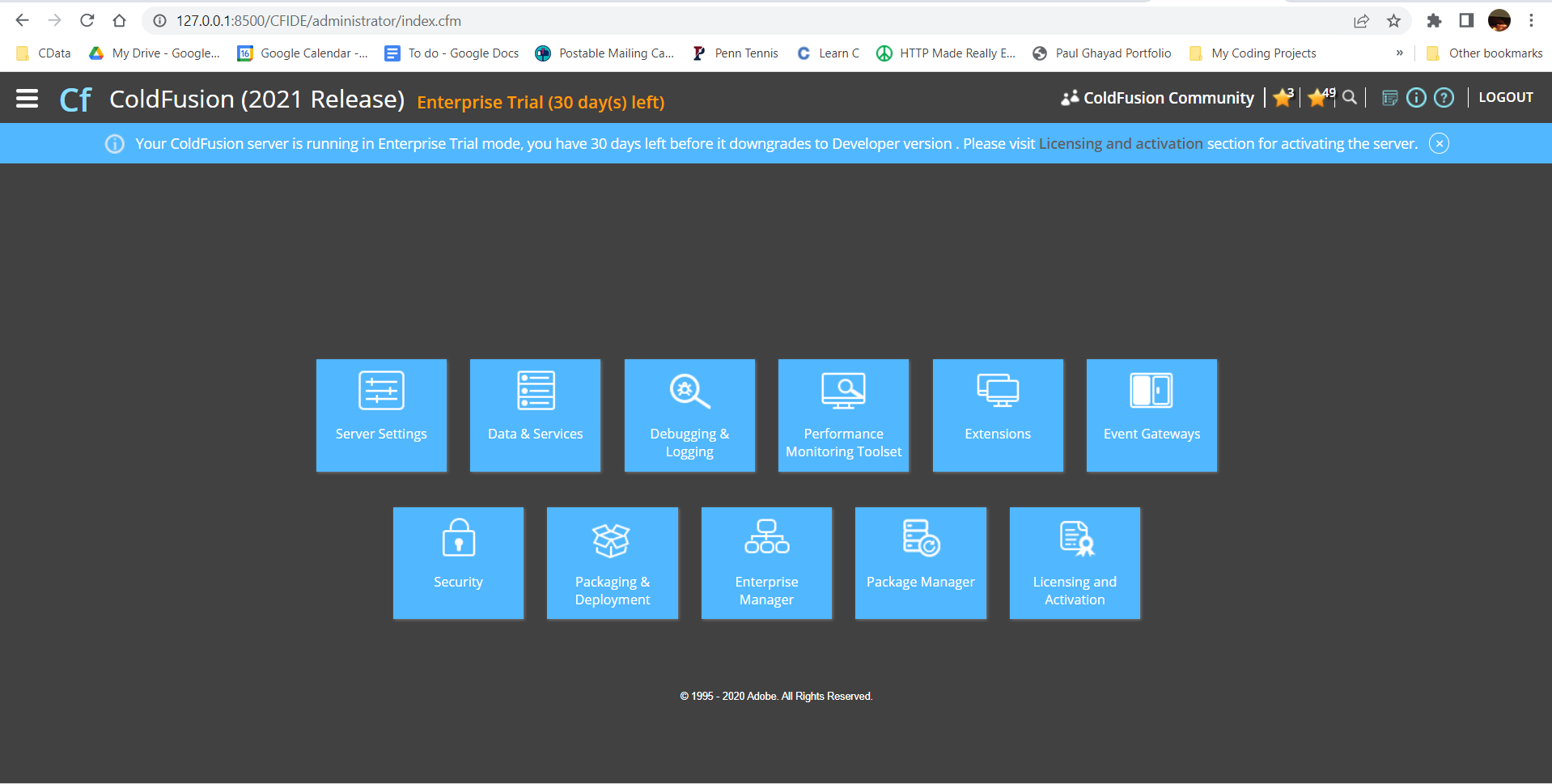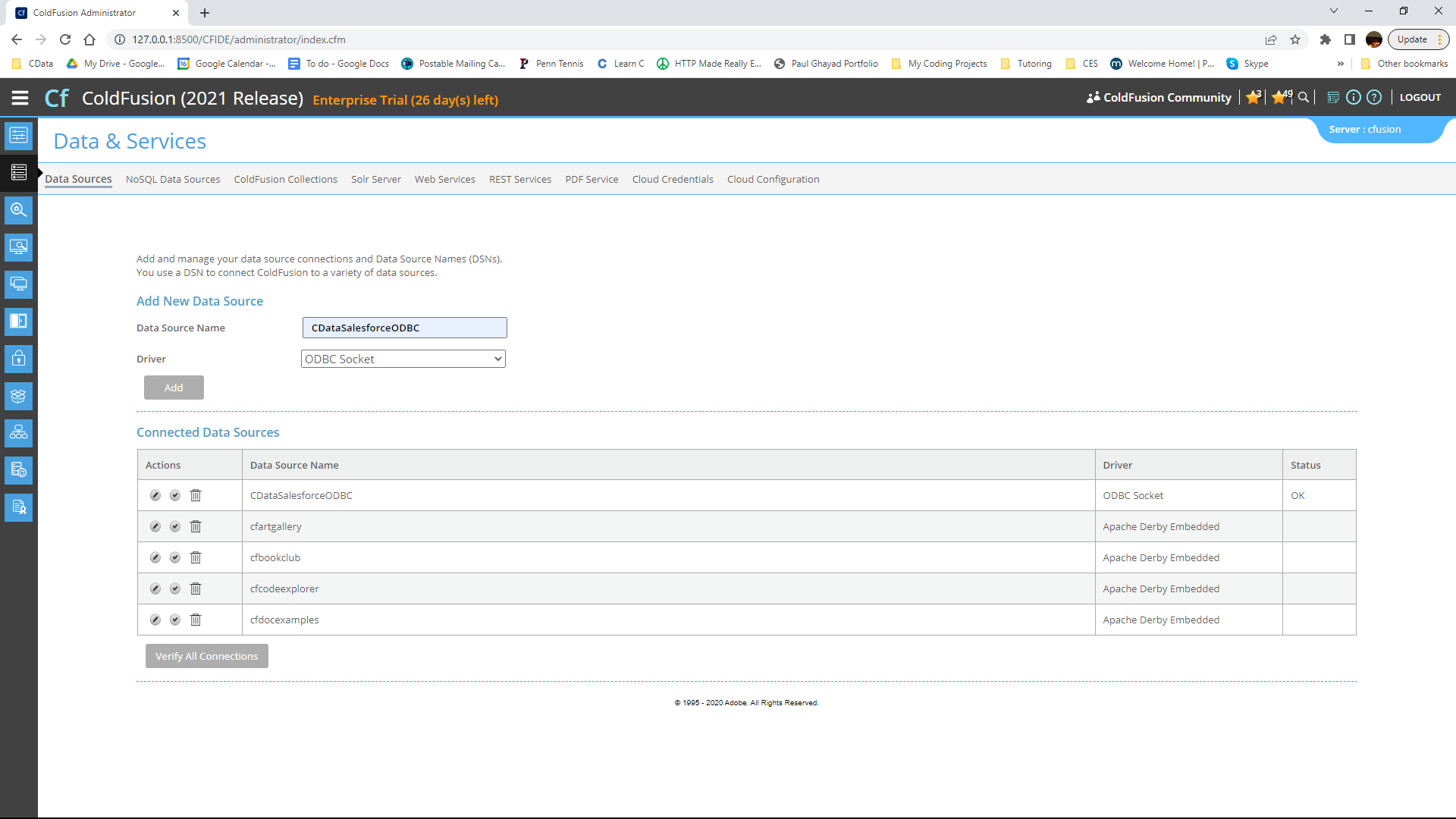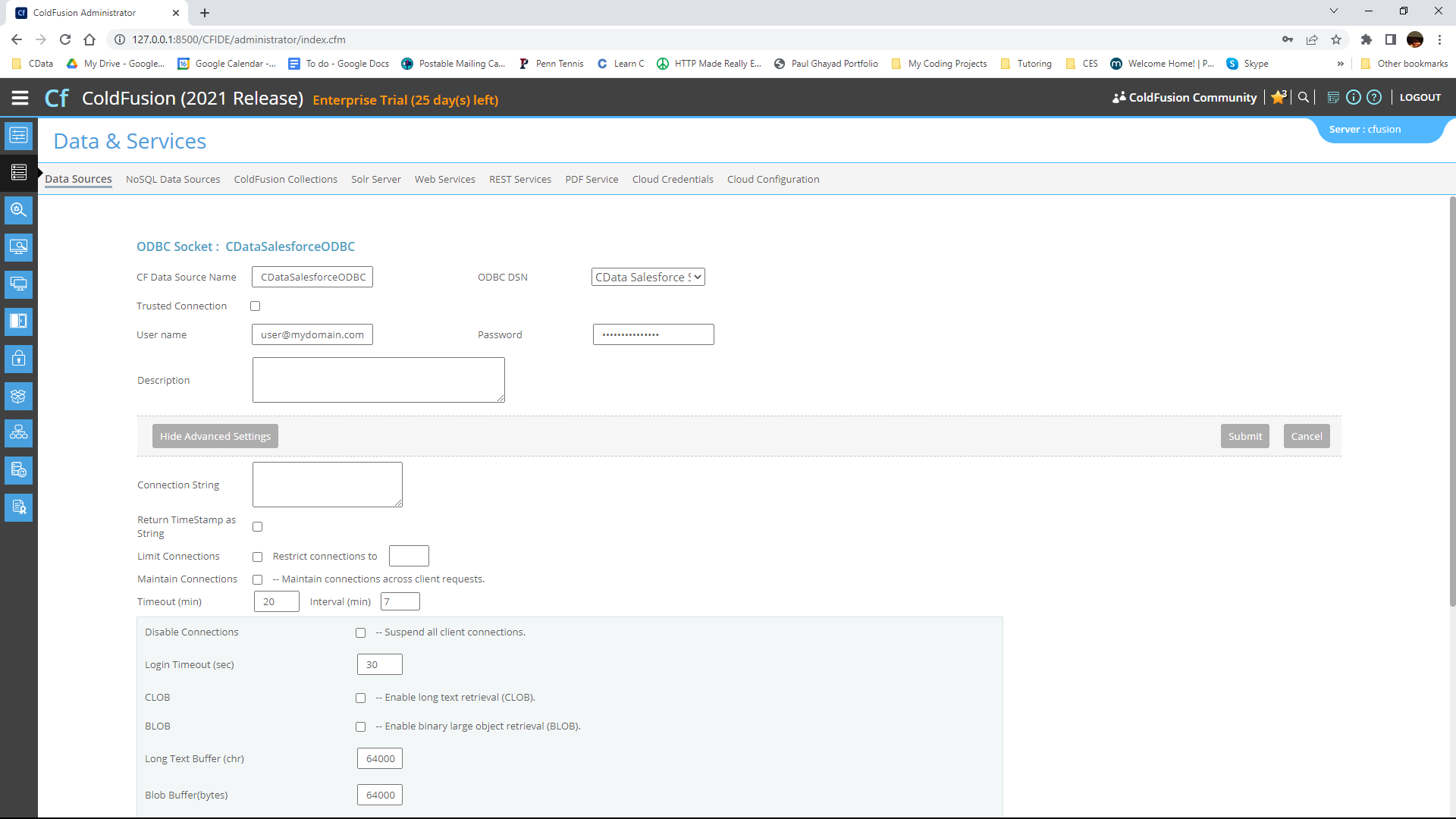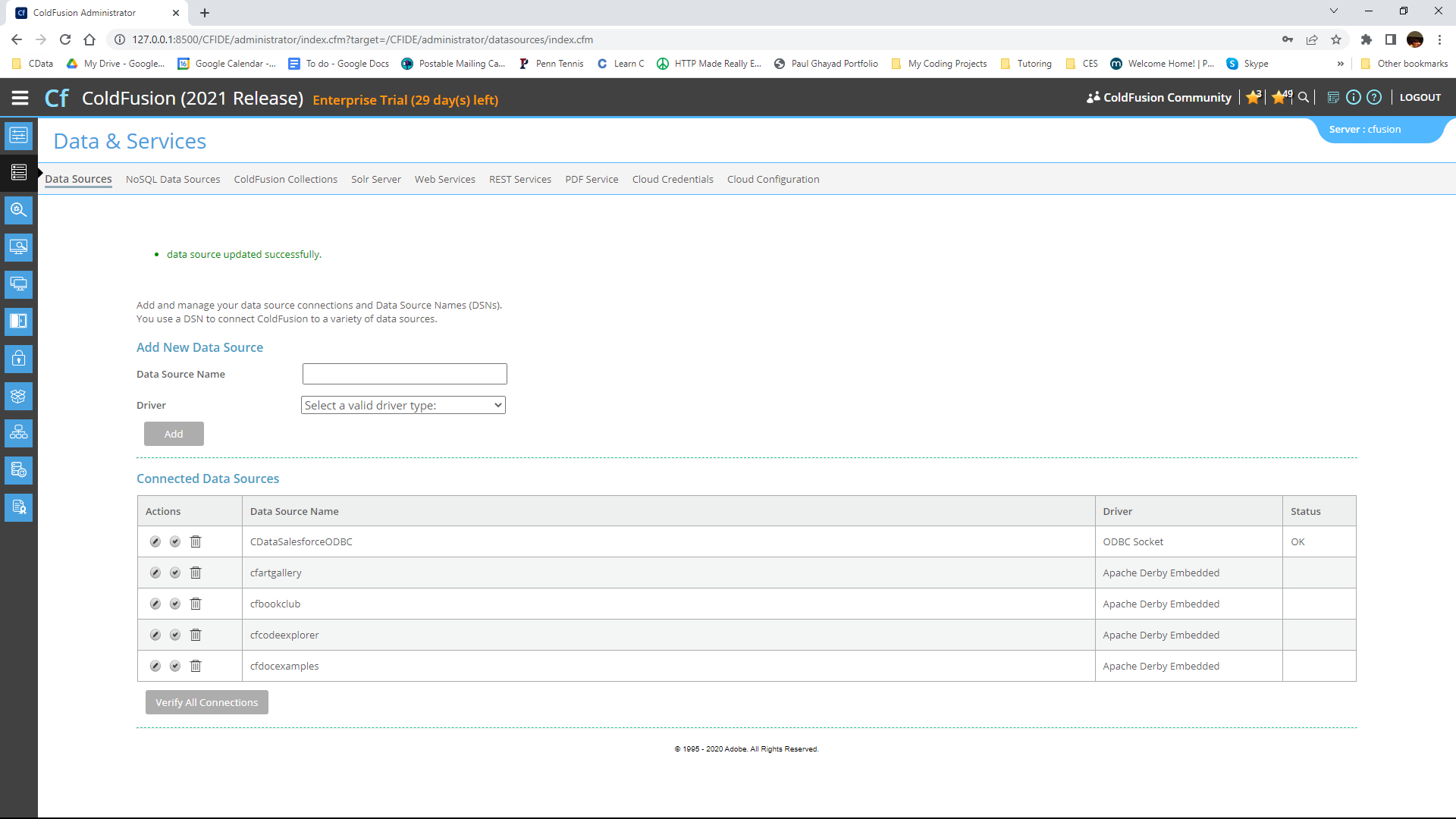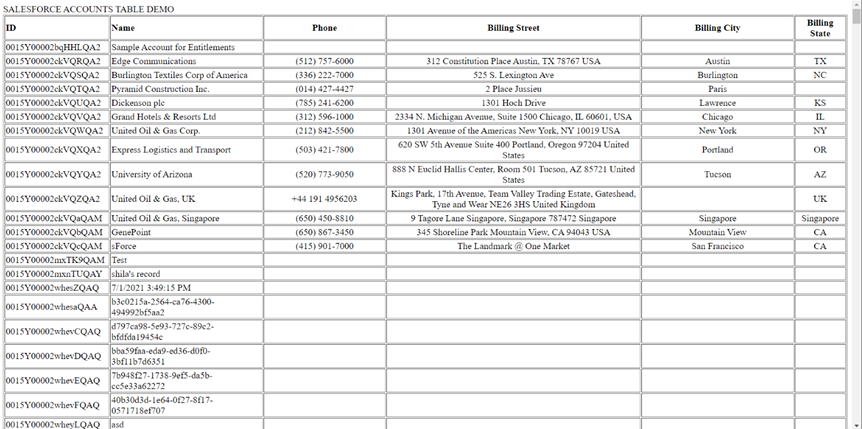Discover how a bimodal integration strategy can address the major data management challenges facing your organization today.
Get the Report →Import Real-Time Jira Data in ColdFusion to Build Applications
Use CData ODBC drivers to import and use Jira data in ColdFusion.
Adobe ColdFusion is a web and mobile application development platform. It uses its own scripting language, ColdFusion Markup Language (CFML), to create data-driven websites as well as generate remote services, such as REST. When ColdFusion is paired with the CData ODBC Driver for Jira, you can link your ColdFusion web and mobile applications to operational Jira data. This allows for your applications to be more robust and complete. This article details how to use the ODBC driver to create a table populated with Jira data from within a ColdFusion markup file.
About Jira Data Integration
CData simplifies access and integration of live Jira data. Our customers leverage CData connectivity to:
- Gain bi-directional access to their Jira objects like issues, projects, and workflows.
- Use SQL stored procedures to perform functional actions like changing issues status, creating custom fields, download or uploading an attachment, modifying or retrieving time tracking settings, and more.
- Authenticate securely using a variety of methods, including username and password, OAuth, personal access token, API token, Crowd or OKTA SSO, LDAP, and more.
Most users leverage CData solutions to integrate Jira data with their database or data warehouse, whether that's using CData Sync directly or relying on CData's compatibility with platforms like SSIS or Azure Data Factory. Others are looking to get analytics and reporting on live Jira data from preferred analytics tools like Tableau and Power BI.
Learn more about how customers are seamlessly connecting to their Jira data to solve business problems from our blog: Drivers in Focus: Collaboration Tools.
Getting Started
To follow along with this tutorial, you need to install the CData ODBC Driver for Jira and Adobe ColdFusion.
Configuring the Connection
If you have not already, first specify connection properties in an ODBC DSN (Data Source Name). This is the last step of the driver installation process. You can use the Microsoft ODBC Data Source Administrator to create and configure ODBC DSNs.
To connect to JIRA, provide the User and Password. Additionally, provide the Url; for example, https://yoursitename.atlassian.net.
Adding a Data Source and Creating a Table
After creating a DSN, follow the steps below to add a new data source, test our connection to it, create a ColdFusion markup file, and, finally, import Jira Jira data and display it in a table in ColdFusion:
-
From the ColdFusion administrator interface, choose Data & Services.
![Selecting Data & Services]()
-
Here, click "Add New Data Source". The data source name can be any name, provided it conforms to the ColdFusion
variable naming conventions. For our ODBC driver, choose "ODBC Socket", then click the "Add" button.
![Adding Data Source Name]()
-
From the ODBC DSN Dropdown menu select CData Jira Sys. Under the Advanced Settings section, leave the
Connection String blank. Note that any properties specified in this input field will override the ones specified in the
DSN Configuration.
![Populating driver properties]()
-
Now, test the connection by pressing the check mark to the left of the CDataJiraODBC data source you just created.
When the data source reports an "OK" status, it is ready for use.
![Testing the connection]()
-
Next, create a new ColdFusion Markup file (.cfm) and place it in the wwwroot directory ("C:\ColdFusion2021\cfusion\wwwroot")
for ColdFusion.
The following code queries the data source:
<cfquery name="JiraQuery" dataSource="CDataJiraODBC"> SELECT * FROM Issues </cfquery>And a CFTable can be used to quickly output the table in HTML:<cftable query = "JiraQuery" border = "1" colHeaders colSpacing = "2" headerLines = "2" HTMLTable maxRows = "500" startRow = "1"> <cfcol header="<b>Summary</b>" align="Left" width=2 text="Summary"/> <cfcol header="<b>TimeSpent</b>" align="Left" width=15 text="TimeSpent"/> ... </cftable>Full code, including the HTML portion is available below:<html> <head><title>CData Software | Jira Issues Table Demo </title></head> <body> <cfoutput>#ucase("Jira Issues Table Demo")#</cfoutput> <cfquery name="JiraQuery" dataSource="CDataJiraODBC"> SELECT * FROM Issues </cfquery> <cftable query = "JiraQuery" border = "1" colHeaders colSpacing = "2" headerLines = "2" HTMLTable maxRows = "500" startRow = "1"> <cfcol header="<b>Summary</b>" align="Left" width=2 text="Summary"/> <cfcol header="<b>TimeSpent</b>" align="Left" width=15 text="TimeSpent"/> ... </cftable> </body> </html> -
Finally, run the code in a browser. It produces a table populated with Jira data!
![Running the code]()
As a note, the CData ODBC Drivers also support parameterized queries using the cfqueryparam element.
For example:
SELECT * FROM Account WHERE name =
Get Started Today
Download a free, 30-day trial of the CData ODBC Driver for Jira and start building Jira-connected applications with Adobe ColdFusion. Reach out to our Support Team if you have any questions.





